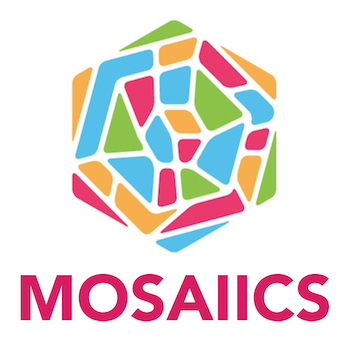Wavetrack produces time-dependent feature pixel masks, which can be applied to integral or base-difference images of different frequencies/wavelengths to produce time-dependent feature maps. It is quite robust and is capable of accurately tracking the pixels related to very dim, large-scale features like coronal bright fronts / EUV waves in AIA observations. It has also been applied successfully to eruptive filaments. Wavetrack works for both on-disk and off-limb solar features, and it is capable of tracking well features that split into separate parts over time.
We have completed the development and initial application of the Wavetrack algorithm, which was started during the first year of the project. The library Wavetrack is hosted on Gitlab at https://gitlab.com/iahelio/mosaiics/wavetrack, and has been released freely for all scientists to use. Extended documentation is available at the Below we show the results of applying Wavetrack to a number of events. The refereed article describing the Wavetrack processing framework (https://doi.org/10.1051/swsc/2022020) has been published in the Journal of Space Weather and Space Climate (IF 3.584).
In the published study, we have applied Wavetrack to four separate events in our catalog of coronal bright fronts (CBF), of which we focus on three – the CBFs on May 11 and June 07, 2011; and on December 12, 2013. For all three, the method accurately tracks the full CBF pixel maps, as can be seen in Figure 1. It also performs excellently on solar filaments, as can be seen in Figure 2. The Wavetrack results have been used as input to the Fourier Local Correlation Tracking method for calculating plane-of-sky speeds of the solar features. Combined with Wavetrack, its application readily reveals in detail the evolution of driven and non-driven regions of the CBFs, as well as their relation to eruptive filament drivers (Figure 3). We find that drivers cause a compression effect thinning the CBF and increasing its speed, as expected from models. However, we also find that CBF brightness does not necessarily increase significantly in the driven regions in AIA data.
Output of the Wavetrack method for three separate CBF events: May 11, 2011; June 07, 2011; December 12, 2013. For each event, we show four snapshots of inverted-colormap grayscale AIA 193-Angstrom images, with the Wavetrack CBF masks applied to base difference data overlaid using a different colormap to highlight them.
Results from tracking with Wavetrack of a large-scale eruptive filament, which occurred on September 29, 2013, is shown here for three snapshots, separated by 10 minutes each. (Bottom panels) Combined tracking with Wavetrack of the May 11, 2011 CBF and the filament driving it is shown for three snapshots of the event, separated by 2 minutes each.
